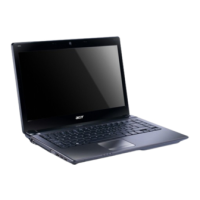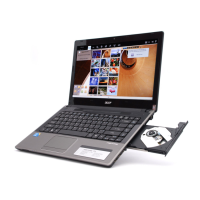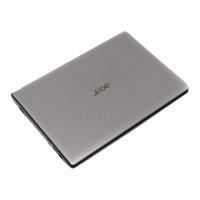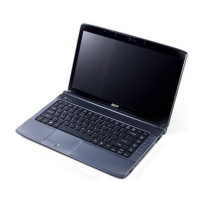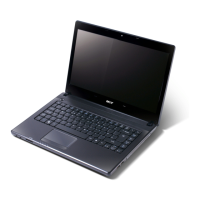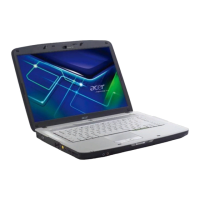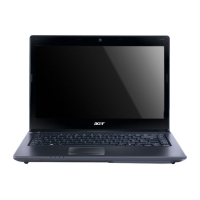Hardware Specifications and Configurations 1-19
Windows Keys 0
The keyboard has two keys that perform Windows-specific functions.
Windows Logo key
Application key
Table 1-9. Windows Keys
Key Description
Windows Logo key Pressed alone, this key has the same effect as clicking on the Windows
Start button; it launches the Start menu. It can also be used with other
keys to provide a variety of functions.
Functions supported by Windows XP, Windows Vista, and Windows 7:
<> : Open or close the Start menu
< > + <R>: Open the Run dialog box
<> + <M>: Minimizes all windows
<SHIFT> + < > + <M>: Restore minimized windows to the desktop
< > + <F1>: Show the Help window
< > + <E>: Open Windows Explorer
<> + <F>: Search for a file or folder
< > + <D>: Display the desktop
<CTRL> + < > + <F>: Search for computers (if you are on a
network)
<CTRL> + < > + <L>: Lock your computer (if you are connected to
a network domain), or switch users (if you're not connected to a
network domain)
<CTRL> + < > + <TAB>: Moves focus from Start menu, to the
Quick Launch toolbar, to the system tray (use RIGHT ARROW or
LEFT ARROW to move focus to items on the Quick Launch toolbar
and the system tray)
< > + <TAB>: Cycle through programs on the taskbar
<> + <BREAK>: Display the System Properties dialog box
Functions supported by Windows XP:
<> + <BREAK>: Display the System Properties dialog box
< > + <U>: Open Ease of Access Center
Application key This key has the same effect as clicking the right mouse button; it opens
the application's context menu.
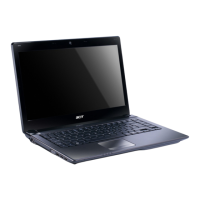
